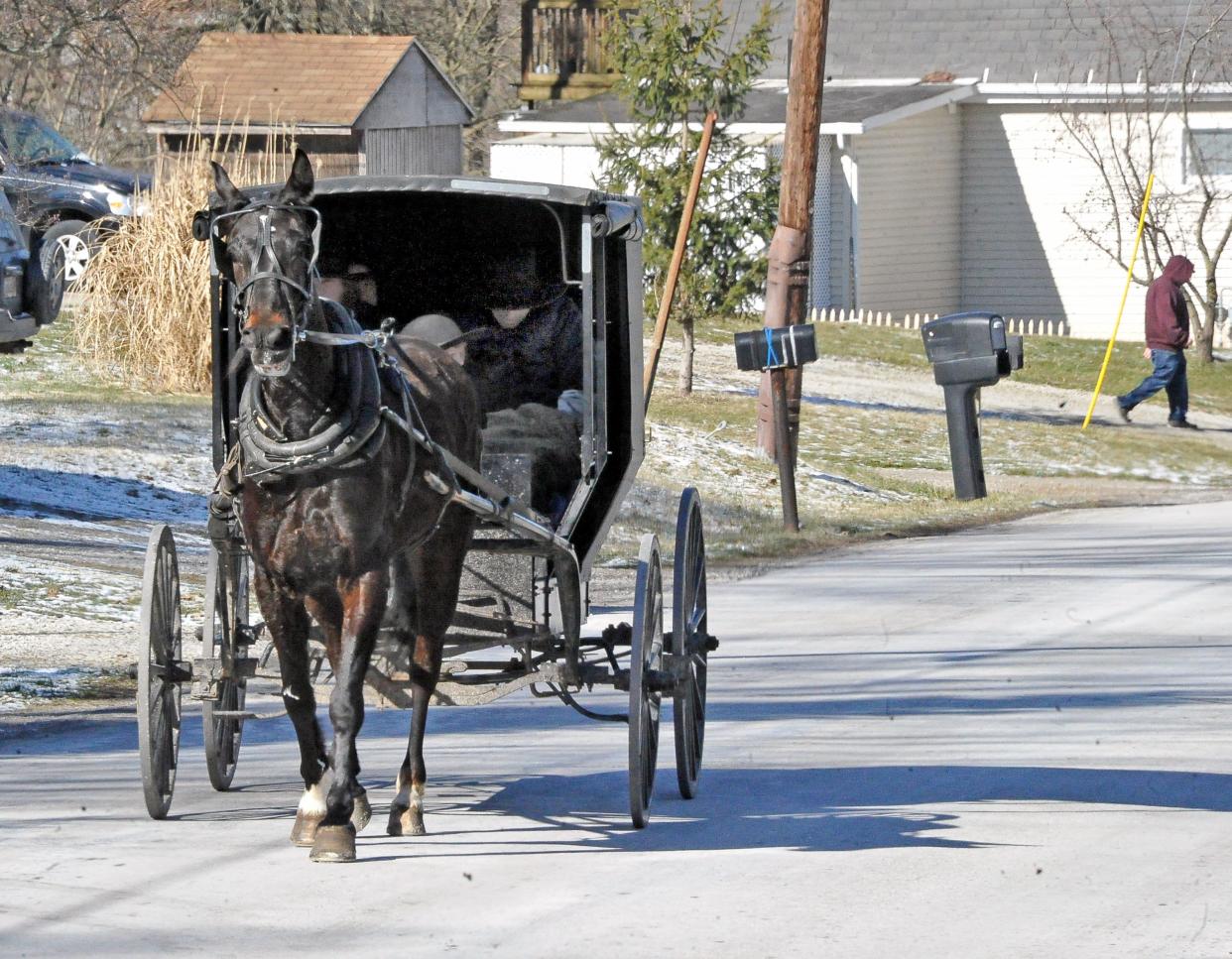Is light requirement proof Ohio Amish are being targeted for religious reasons? | Opinion

Cory Anderson completed a master’s thesis on motor vehicle-buggy crash scenarios and is currently a post-doctoral fellow of population health at Pennsylvania State University. He resides in northeast Ohio.
Members of several strict Amish denominations throughout Ohio religiously object to battery-powered flashing lights. That fact did not stop Ohio House Bill 30, legislation requiring that they be mounted on buggies, to be signed into law June 1, 2022.
Among other objections, electric lights make their buggies appear just a bit more like tractors, trucks, and cars.
More: 'Paying a fine is not an option.' Some Amish balk at Ohio's new buggy light law
These Amish do practice safety-oriented buggy markings within what is religiously acceptable, namely, reflective tape along the perimeter, reflective materials on wheels, and side-mounted lanterns.
Still, police have routinely cited Amish adolescents, adults, and elderly for not mounting a battery-powered flashing light.
At first glance, these lights may seem to only help motorists better “see” buggies and avoid rear-end crashes. But are they superior to current markings? And exactly how many rear-end crashes result from attentive motorists rear-ending a buggy they simply did not “see?"
We currently know that motorists may not see a buggy due to the sun’s glare, personal intoxication, operation of a cellphone, or a hill or curve blocking view of the buggy. In all of these common crash scenarios, battery-powered flashing lights are unproven, if not totally ineffective.
At the same time, these lights increase the risk of crash once motorists see the buggy.
For example, when motorists attempt to pass, they may cut too closely because they miscalculate buggy width. Current buggy markings accent the perimeter, providing motorists with information about approaching time and the passing space.
Do the lights improve safety?
On automobiles, perimeter markings such as head- and tail-lights are nearly universal, suggesting their effectiveness. However, a single battery-powered flashing light emphasizes a point on the buggy, drawing attention away from the width.
Battery-powered flashing lights also increase passing-related crashes due to the “moth effect,” the tendency of 1 in 21 motorists to become mesmerized and steer toward flashing objects, such as emergency vehicles, LED billboards, and battery-powered flashing lights.
If a motorist is passing a buggy, battery-powered flashing lights may trigger a moth effect, pulling the motorist in. Many agencies regulating emergency vehicle lighting and LED billboards are moving away from flashing brightness for safety’s sake, not toward it.

Motorists may also strike buggies due to careless, aggressive passing. Motorists pacing a battery-powered flashing light-equipped buggy, waiting for a safe chance to pass while a bright yellow light is flashing in their eyes, will only become more impatient, increasing risk of an unsafe pass.
More: 'Buggy Bill' passes; law requires flashing lights on buggies
Battery-powered flashing lights do not address documented causes of rear-end collisions. Simultaneously, they increase crash risk as motorists attempt passes.
House Bill 30’s legal development was particularly knotty.
First, the billl’s supplementary materials misrepresented the “Amish community” as bill supporters.
Four unsigned letters of support from self-identified Amish are followed by 350 “Amish community” signatures… people who are all non-Amish!
Second, co-sponsor Rep. Darrell Kick, R-Loudonville, said that “This bill does not require any excessive regulation or undue burden upon […] Amish,” but an attorney’s bill analysis detailed Constitutional cases over related objectionable markings.
Third, co-sponsor Rep. Scott Wiggam, R-Wooster, overstates the battery-powered flashing light's effectiveness, saying the lights will help motorists turning corners see the buggies.
Battery-powered flashing lights are ineffective when objects along a corner block view of the buggy.
Who are the masterminds behind House Bill 30?
They include some ex-Amish, non-Amish neighbors, and both strict and progressive Amish.
They are generally aware that many strict Amish object to battery-powered flashing lights. I’ve heard enough casual conversations about battery-powered flashing lights, with critical comments toward stricter Amish, to wonder what really underlies this law.
More than “just” safety, it may well be a law approved for a religiously targeted project.
Cory Anderson completed a master’s thesis on motor vehicle-buggy crash scenarios and is currently a post-doctoral fellow of population health at Pennsylvania State University. He resides in northeast Ohio.
This article originally appeared on The Columbus Dispatch: Is Ohio law requiring battery-powered flashing light proof Amish are being targeted?


